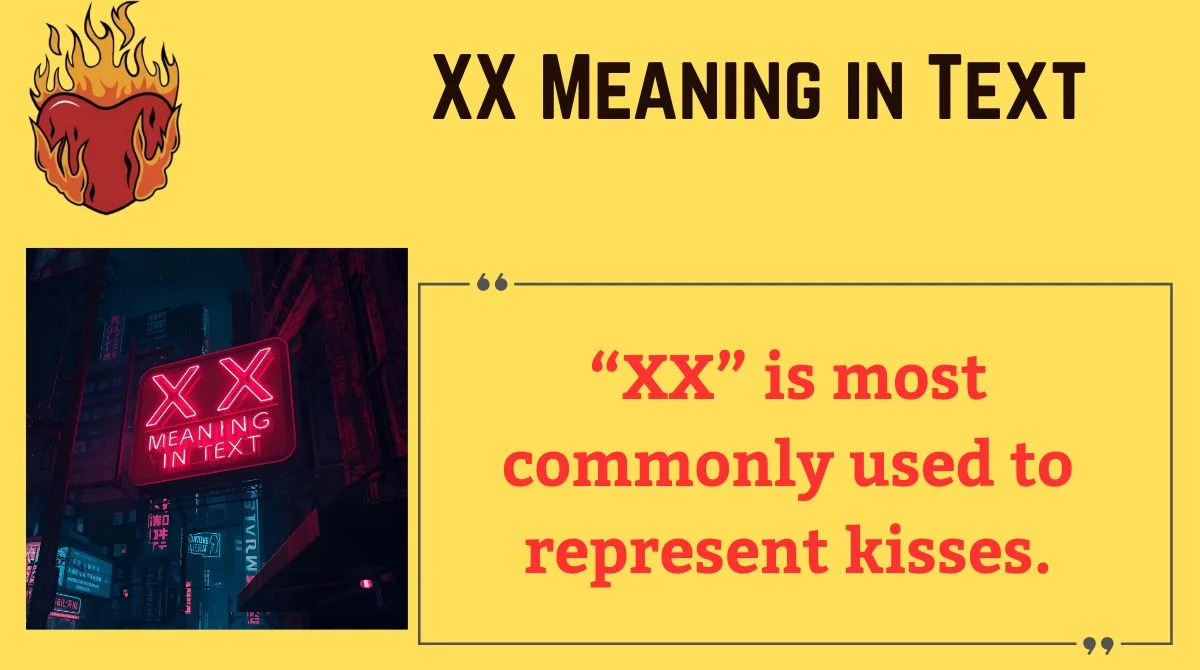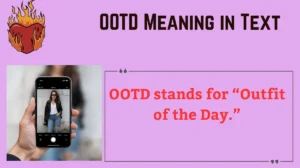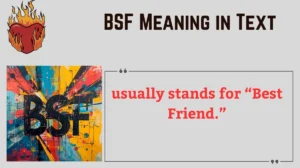Digital communication runs on shorthand. Emojis, abbreviations, and symbols have become the language of quick messages.
One symbol that keeps popping up, especially at the end of texts or DMs, is “XX.” What does it actually mean? Why do some people use it liberally while others avoid it?
This guide digs into the XX meaning in text, showing you its origins, nuances, cultural differences, and how to respond appropriately.
What “XX” Actually Means
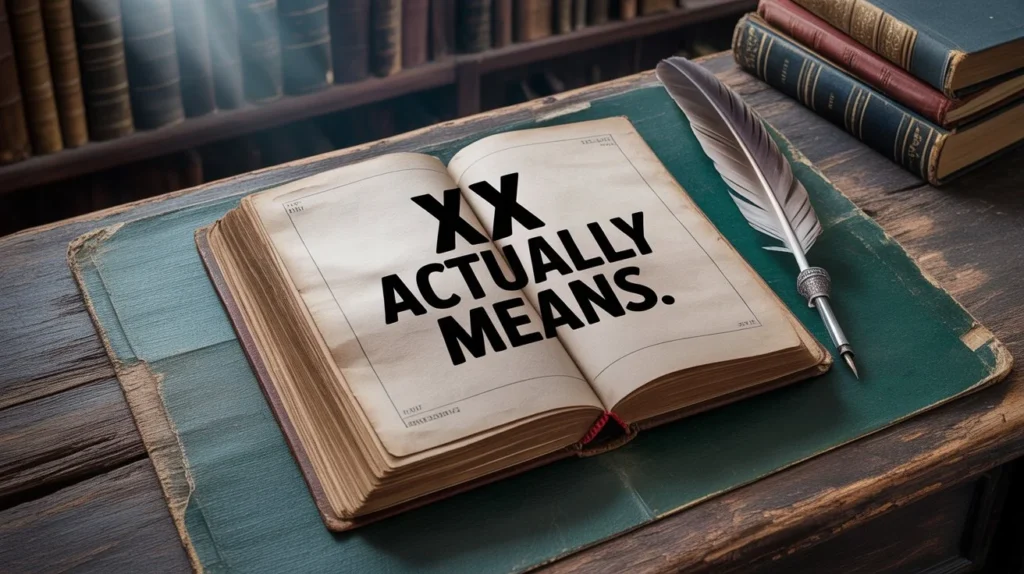
In texting and online messaging, “XX” is most commonly used to represent kisses. It’s a sign-off, like “love” or “best,” but with a warmer or more affectionate tone. Think of it as a digital air kiss—friendly or romantic depending on context.
- One “X” often represents a single kiss.
- Doubling it to “XX” can signal stronger affection or familiarity.
- When combined with “O” (like “XOXO”), the “O” stands for hugs.
Example:
“Thanks for your help today XX”
Here the sender is expressing gratitude with affection, not just ending a message.
Evolution and History of “XX”
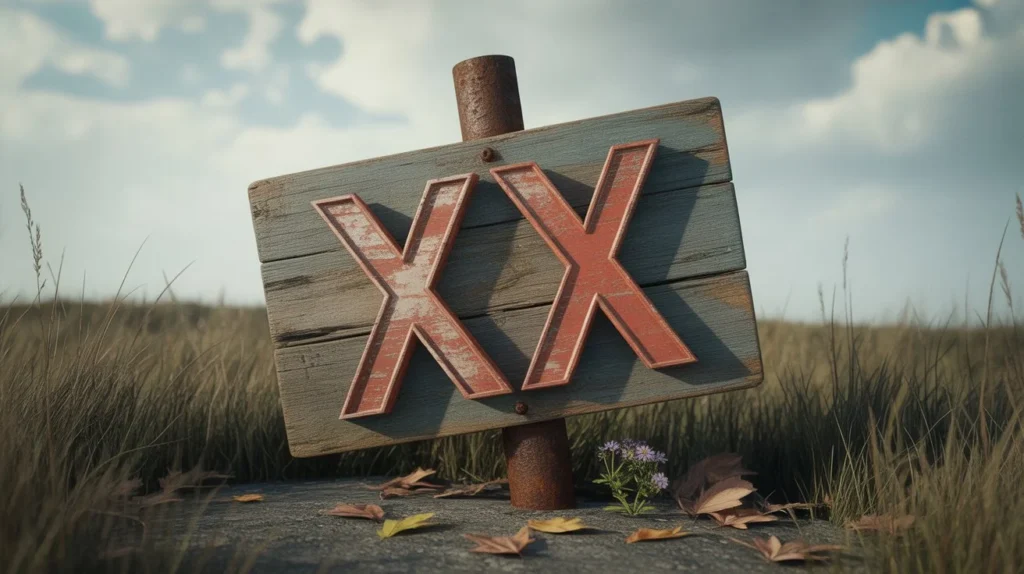
The roots of “XX” predate smartphones. In fact, it goes back to handwritten notes in Europe. For centuries, an “X” at the bottom of a letter meant a kiss, sometimes sealed with a literal kiss on the paper. When texting emerged in the late 1990s and early 2000s, people carried over this practice.
- Middle Ages: Illiterate people signed documents with an “X” and kissed it to show sincerity.
- 20th century: Letters between friends or lovers often ended with “X” or “XX.”
- Modern texting: SMS, chatrooms, and later social media preserved the shorthand.
This continuity explains why “XX” feels so natural in messages today.
Main Contexts of Use
Although “XX” always points to affection, its tone shifts depending on the relationship.
| Context | Typical Meaning | Example Message |
|---|---|---|
| Friendship | Friendly warmth, platonic sign-off | “See you at lunch XX” |
| Romantic | Affection, intimacy, flirtation | “Goodnight, can’t wait to see you XX” |
| Family | Caring, non-romantic love | “Drive safe! XX Mom” |
| Professional (rare) | Informal sign-off between close colleagues | “Great work today XX” |
Use the table above as a quick decoder.
Tone, Nuance, and Interpretation
The meaning of “XX” in text is never fixed. It changes with:
- Relationship closeness: A partner sending “XX” feels different from a coworker doing it.
- Platform: WhatsApp and Instagram DMs tolerate more casual sign-offs than corporate email.
- Punctuation: “XX.” (with a period) can feel formal; “XX!!” feels excited; “xx” (lowercase) is softer.
Tip: When unsure, check the overall tone of the conversation rather than the symbol alone.
Common Misunderstandings
Because “XX” has affectionate overtones, it can sometimes be misunderstood:
- Assuming romance where none is intended.
- Believing the sender is crossing boundaries in professional contexts.
- Thinking it’s a secret code or offensive sign (it isn’t in mainstream usage).
Quick clarification if you’re confused is often best. A simple, “Hey, just checking, what does ‘XX’ mean here?” avoids awkwardness.
Cultural and Regional Variations
Cultural norms shape how “XX” appears in texts.
- UK & Ireland: Very common in everyday texts, even between acquaintances.
- North America: Used less frequently, often reserved for closer relationships.
- Australia & New Zealand: Popular among women as a friendly sign-off.
- Asia & Middle East: Less common; emojis or words like “hugs” are preferred.
| Region | Frequency | Typical Use |
|---|---|---|
| UK | High | Almost all friendly messages |
| US/Canada | Medium | Mostly romantic or family |
| Asia | Low | Substituted by emojis |
“XX” in Online Communities and Dating Apps
Dating apps and forums often amplify shorthand like “XX.” People use it:
- In profiles to appear friendly or approachable (“Looking for fun chats XX”).
- In first messages as a subtle flirty cue.
- In communities (like fan groups) as a supportive sign-off.
Case study:
A UK-based dating coach analyzed 500 Tinder chats. Profiles including “XX” in their bios received 17% more responses from British users, but no bump among Americans. This shows cultural context matters.
Alternatives and Similar Expressions
Plenty of symbols and words overlap with “XX.” Here’s a quick comparison:
| Symbol/Word | Typical Tone | Notes |
|---|---|---|
| X | Single kiss, minimal affection | Casual or friendly |
| XXX | Very affectionate, intimate | Can look romantic or adult |
| XO | Hug and kiss | Popular in US |
| XOXO | Hugs and kisses multiple times | Common in social posts |
| ❤️ Emoji | Love/affection | Global but tone varies |
| 🤗 Emoji | Hug/comfort | Non-romantic |
Knowing these helps you pick the right sign-off for the relationship and platform.
When “XX” Can Backfire
“XX” isn’t always safe. It can:
- Seem too intimate in business settings.
- Be misread as flirtatious when not intended.
- Carry unintended adult connotations in some contexts (e.g., “XXX” means explicit content).
Best practice: If you’re not sure about the recipient’s expectations, skip “XX” or use a neutral sign-off like “Thanks” or “Best.”
Best Practices for Responding
Not sure how to answer a message ending with “XX”?
- Mirror their tone: If you’re comfortable, respond with “XX” too.
- Neutral reply: Leave it out if you’re unsure, e.g., “Thanks for your help.”
- Clarify if confused: “Just to be sure—did you mean kisses with the XX?”
This sets clear boundaries without sounding cold.
Professional and Formal Communication Guidelines
In work settings, “XX” rarely fits unless you have a personal rapport with the colleague.
Safer alternatives:
- “Thanks again”
- “Warm regards”
- “Best wishes”
Using these keeps your tone friendly but professional.
Quick Reference Table
| Feature | Details |
|---|---|
| Meaning | Kisses / affectionate sign-off |
| Origin | Handwritten letters in Europe |
| Main Uses | Friendship, romance, family |
| Risks | Misinterpretation, unprofessional tone |
| Alternatives | XO, ❤️, Warm regards |
FAQs
What does “XX” mean in a text message from a friend?
It usually means friendly affection—a digital kiss or warm sign-off without romantic intent.
Is “XX” appropriate at work?
Not typically. Stick to neutral sign-offs in professional emails unless you’re very close to the person.
How is “XX” different from “XO” or “XOXO”?
“XO” adds a hug; “XOXO” adds multiple hugs and kisses. “XX” is just two kisses.
Does “XX” always mean romantic interest?
No. In many cultures it’s platonic. Context determines whether it’s romantic.
Why do some people write lowercase “xx” and others uppercase “XX”?
Lowercase “xx” feels softer and casual, uppercase “XX” can feel more emphatic or formal depending on context.
Conclusion & Key Takeaways
“XX” started as a mark of sincerity and a literal kiss on paper. Today, it’s one of the simplest ways to express warmth, affection, or friendliness in digital messages.
Its meaning shifts with culture, platform, and relationship, but the essence stays the same—a quick, affectionate sign-off.
When in doubt, remember: context is everything. Look at who’s sending it, how they normally write, and whether the platform is casual or formal. With this guide, you can decode “XX” in text confidently and use it without awkward missteps.

Mark Peter is the creative mind behind RizzleLineLove.com, your go-to hub for witty, flirty, and downright hilarious pick-up lines. With a passion for blending humor and charm, Mark crafts content that sparks conversations, breaks the ice, and adds a playful twist to everyday moments.
Whether you’re looking to impress your crush, make your friends laugh, or spice up your social media captions, his work is all about helping you connect — one clever line at a time.

